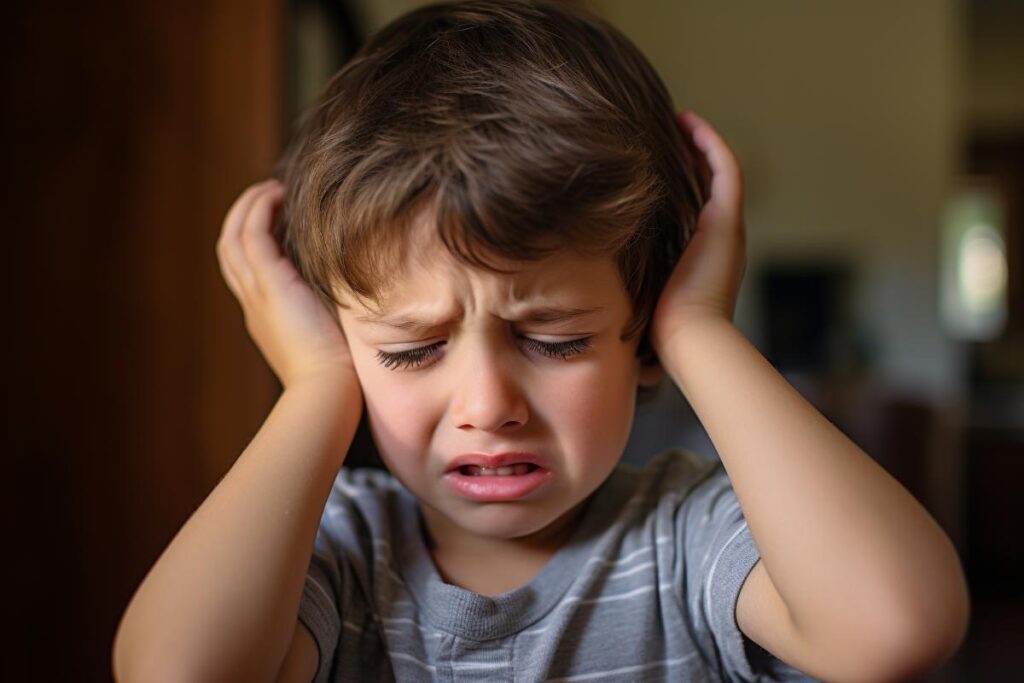If you're dealing with a sports injury in Delray, you've got several treatment options that can help you bounce back effectively. From physical therapy to acupuncture, each method offers unique benefits tailored to your recovery needs. You might find that a combination of therapies can enhance your healing process and get you back to your game sooner than you think. But which treatments should you prioritize, and how can they specifically address your injury? Let's explore the top seven approaches that could make a difference in your recovery journey.
Physical Therapy
When you suffer a sports injury, physical therapy often serves as a key component in your recovery plan. It helps restore strength, flexibility, and functionality to the affected area, ensuring you get back to your favorite activities as quickly and safely as possible.
A skilled physical therapist will assess your injury and create a tailored rehabilitation program that addresses your specific needs.
You'll engage in various exercises designed to improve your range of motion and build muscle strength. These exercises might include stretching routines, resistance training, and balance activities. By consistently following your physical therapist's guidance, you'll gradually regain the mobility and strength necessary to return to your sport.
In addition to exercises, your therapist may incorporate modalities like ice, heat, or ultrasound therapy to reduce pain and inflammation. These techniques can be incredibly helpful in managing discomfort and speeding up the healing process.
You'll also learn valuable techniques for preventing future injuries, ensuring you're better prepared for the physical demands of your sport.
Don't underestimate the importance of communication during your sessions; sharing your feelings about pain or discomfort will enable your therapist to make necessary adjustments.
Chiropractic Care
Physical therapy plays an essential role in recovery, but chiropractic care can also be a valuable part of your treatment plan for sports injuries. When you experience pain or discomfort, your body's alignment might be off, leading to further complications if left untreated. Chiropractors specialize in diagnosing and treating musculoskeletal issues, which can help alleviate pain, improve function, and enhance your overall performance.
During your chiropractic sessions, the practitioner will assess your specific condition and may perform spinal adjustments or manipulations. These techniques aim to restore proper alignment in your spine and joints, reducing inflammation and promoting healing.
You'll likely notice improved mobility and reduced pain after these treatments, making it easier for you to return to your favorite sports activities.
Chiropractic care also emphasizes the importance of education. Your chiropractor may provide you with advice on injury prevention, posture improvement, and exercises tailored to your specific needs. This proactive approach can help you avoid future injuries and maintain your physical well-being.
Additionally, chiropractic care can complement other treatments you're receiving, such as physical therapy. By addressing misalignments, it enhances the effectiveness of your overall recovery process.
Whether you're dealing with a sprain, strain, or chronic pain, incorporating chiropractic care into your treatment plan can lead to a faster and more complete recovery. So, consider reaching out to a chiropractor to discuss how they can support your journey back to peak performance.
Massage Therapy
Incorporating massage therapy into your recovery plan can greatly enhance your healing process from sports injuries. This technique not only helps reduce muscle tension but also improves circulation, which is imperative for delivering nutrients to injured tissues.
When you receive a massage, the increased blood flow can accelerate the healing of damaged muscles and connective tissues, allowing you to get back to your sport faster.
Massage therapy also plays an essential role in pain management. By targeting specific areas of discomfort, a skilled massage therapist can alleviate pain and stiffness, making your rehabilitation more manageable.
You may find that regular sessions help you feel more relaxed and less anxious about your injury, contributing to an overall better mindset during recovery.
Additionally, massage therapy can improve flexibility and range of motion. Many athletes experience tightness in their muscles, which can hinder performance.
By incorporating regular massages, you can stretch and loosen these tight areas, enhancing your overall mobility.
Listening to your body is important during recovery. If you notice persistent pain or discomfort, it's essential to communicate with your therapist.
They can adjust their techniques to better suit your needs, ensuring you get the most benefit from your sessions.
Cryotherapy
After exploring the benefits of massage therapy, it's time to contemplate another effective recovery method: cryotherapy. This innovative treatment involves exposing your body to extremely cold temperatures for a short period, promoting healing and reducing inflammation. If you've been battling sports injuries, cryotherapy could be a game changer for your recovery process.
Here's how cryotherapy can help you:
- Reduced Inflammation: The cold helps constrict blood vessels, which decreases swelling and inflammation, allowing you to return to your activities faster.
- Pain Relief: Cryotherapy can numb nerve endings, providing immediate pain relief. This can be particularly beneficial after a tough workout or injury.
- Enhanced Recovery: By boosting circulation once you exit the cold chamber, your body flushes out toxins and delivers oxygen-rich blood to your muscles, speeding up the healing process.
You might wonder how it feels to step into a cryotherapy chamber. You'll experience an intense chill, but it's only for a few minutes. Many people report feeling invigorated and energized afterward.
Incorporating cryotherapy into your recovery routine might just be what you need to get back in the game. It's a quick, effective way to combat the effects of sports injuries, so don't hesitate to explore this option. Your body will thank you for it!
Acupuncture
If you're dealing with a sports injury, acupuncture might be a game-changer for you.
This ancient practice offers pain relief benefits, helps speed up recovery, and promotes a holistic healing approach.
Consider giving it a try to enhance your overall recovery process.
Pain Relief Benefits
Acupuncture offers significant pain relief benefits for athletes recovering from sports injuries. This ancient practice can help you manage pain effectively and enhance your overall well-being.
When you undergo acupuncture, you might experience the following benefits:
- Endorphin Release: The needles stimulate your body's natural painkillers, releasing endorphins that help alleviate discomfort and boost your mood.
- Reduced Inflammation: Acupuncture can decrease inflammation in injured areas, allowing for improved mobility and less pain during recovery.
- Improved Blood Circulation: By enhancing blood flow to the affected regions, acupuncture promotes healing and can reduce soreness, making it easier for you to get back to your favorite activities.
These pain relief benefits make acupuncture a compelling option for athletes like you who want to manage pain without relying solely on medication.
Integrating acupuncture into your recovery plan can lead to a more balanced approach to healing, allowing you to return to your sport with confidence and reduced discomfort.
Enhanced Recovery Speed
When you're sidelined by a sports injury, every day spent recovering can feel like an eternity. You want to get back in the game, and acupuncture might be just what you need to speed up your recovery. This ancient practice stimulates specific points on your body, promoting blood flow and enhancing the healing process.
By targeting muscle tension and inflammation, acupuncture can help reduce recovery time considerably. As you undergo treatment, you'll likely notice an improvement in your overall mobility and a decrease in pain, allowing you to engage in rehabilitation exercises sooner.
Additionally, acupuncture can help balance your body's energy, leading to a more effective healing environment. This holistic approach not only addresses the injury but also supports your overall well-being, which is vital when you're trying to recover quickly.
Incorporating acupuncture into your recovery regimen can lead to faster results and a stronger comeback. Talk to your healthcare provider about how this treatment can complement your healing process, and take the first step toward getting back on the field.
You deserve to recover swiftly and return to the activities you love.
Holistic Healing Approach
Integrating acupuncture into your recovery plan offers a holistic healing approach that targets both physical and emotional well-being. This ancient practice can be particularly beneficial after sports injuries, helping you restore balance and enhance your overall recovery experience.
Here's how acupuncture can support your healing journey:
- Pain Relief: By stimulating specific points on your body, acupuncture can effectively reduce pain, allowing you to engage in physical therapy and other rehabilitation exercises more comfortably.
- Improved Circulation: The treatment promotes blood flow to injured areas, accelerating the healing process and reducing inflammation, so you can get back to your favorite activities faster.
- Stress Reduction: Acupuncture helps alleviate anxiety and stress, creating a calming effect that can enhance your mental resilience during the recovery process.
Incorporating acupuncture into your regimen not only addresses the physical aspects of your injuries but also nurtures your emotional health.
Ultrasound Treatment
When you're dealing with a sports injury, ultrasound treatment can offer significant benefits.
This procedure uses sound waves to promote healing in targeted areas, helping you recover faster.
You'll find that the duration of each session is manageable, making it a convenient option for your recovery plan.
Benefits of Ultrasound Therapy
Utilizing ultrasound therapy can considerably enhance the recovery process for sports injuries. This non-invasive treatment harnesses sound waves to promote healing and reduce pain, making it a popular choice among athletes.
Here are some key benefits you can expect:
- Reduced Pain and Inflammation: Ultrasound therapy helps to alleviate discomfort by increasing blood flow to the injured area, which aids in reducing swelling and promoting healing.
- Accelerated Tissue Repair: The sound waves stimulate cellular activity, enhancing the body's natural repair mechanisms. This means you'll likely bounce back from injuries faster and get back to your game sooner.
- Improved Flexibility and Range of Motion: By encouraging tissue relaxation and reducing stiffness, ultrasound therapy can enhance your flexibility and range of motion, which is essential for ideal athletic performance.
With these benefits, integrating ultrasound therapy into your treatment plan can be a game-changer.
You'll find that it not only speeds up recovery but also helps you regain confidence in your physical abilities.
Don't let injuries sideline you; consider ultrasound therapy as a critical part of your recovery journey.
Procedure and Duration
After exploring the benefits of ultrasound therapy, it's crucial to understand how the treatment works and what you can expect during a session.
When you arrive for your ultrasound treatment, a trained professional will first assess your injury and discuss your specific needs. You'll be asked to lie down comfortably, allowing easy access to the affected area.
Next, the therapist applies a conductive gel to your skin. This gel helps the ultrasound waves penetrate deeper into the tissues. Using a handheld device called a transducer, the therapist will move it over the injured area in a circular motion. You might feel a gentle warmth or tingling sensation, but the procedure shouldn't be painful.
Typically, a session lasts between 5 to 15 minutes, depending on the severity of your injury and the area being treated. Most people require multiple sessions to achieve favorable results.
After the treatment, you can resume your regular activities, but it's crucial to follow any post-treatment guidelines provided by your therapist. Overall, ultrasound therapy is a quick, non-invasive option that can help speed up your recovery process.
Targeted Injury Recovery
Effective ultrasound treatment plays an essential role in targeted injury recovery by specifically addressing the tissues affected by sports injuries. This non-invasive technique uses sound waves to penetrate deep into your tissues, promoting healing and reducing pain.
As you undergo ultrasound treatment, you'll likely notice several benefits, including:
- Increased blood flow – The sound waves stimulate circulation, delivering more oxygen and nutrients to the injured area.
- Reduced inflammation – Ultrasound helps decrease swelling and inflammation, allowing you to regain mobility faster.
- Enhanced tissue repair – It accelerates the healing process by promoting collagen production, essential for recovering damaged tissues.
You'll find that this treatment is particularly effective for muscle strains, ligament sprains, and tendon injuries.
It's often incorporated into a thorough recovery plan that may include physical therapy and strength training. By targeting the specific area of injury, ultrasound treatment not only alleviates pain but also supports your body's natural healing processes.
If you're looking to bounce back from a sports injury, consider discussing ultrasound treatment with your healthcare provider to see if it's right for you.
Active Release Technique
Active Release Technique (ART) is a hands-on therapy that targets soft tissue injuries, helping you recover faster and more effectively. This innovative method focuses on the release of tension in muscles, tendons, ligaments, fascia, and nerves, which often become tight or restricted due to overuse or injury. By addressing these issues, ART can greatly reduce pain and improve your range of motion.
During an ART session, a trained practitioner evaluates your condition and applies specific pressure to affected areas while guiding you through various movements. This active engagement helps break down scar tissue and adhesions, promoting better blood flow and accelerating healing.
Whether you're dealing with a sprain, strain, tendonitis, or any other sports-related injury, ART can be tailored to your unique situation.
One of the key benefits of ART is its ability to target the root cause of your pain, rather than just masking symptoms. You'll likely experience immediate relief after your first session, and many athletes report improved performance as they regain flexibility and strength.
Plus, ART is safe for all ages and skill levels, making it an excellent option for anyone looking to enhance their recovery process.
If you're struggling with a sports injury and haven't tried ART yet, now's the time. It's a proven method that can help you get back in the game faster while ensuring your body heals properly.
Don't let injuries hold you back—consider adding Active Release Technique to your recovery plan.
Conclusion
In Delray, you have access to a variety of effective treatments for sports injuries. Whether you opt for physical therapy to build strength, chiropractic care for alignment, or massage therapy to ease tension, there's a solution tailored to your needs. Cryotherapy and acupuncture can help with pain management, while ultrasound treatment and active release techniques enhance recovery. By exploring these options, you can get back to doing what you love—feeling strong and ready for your next challenge!



